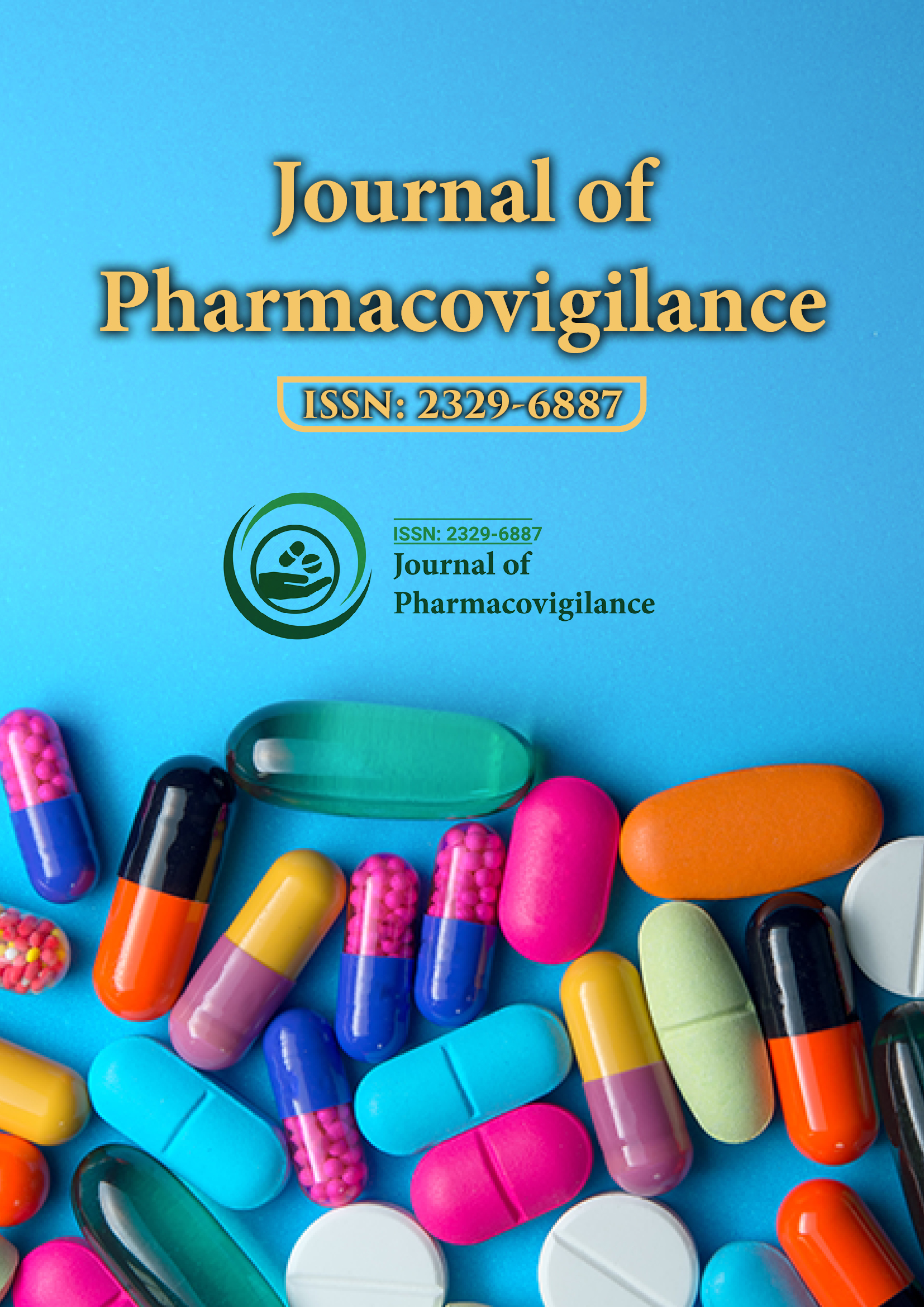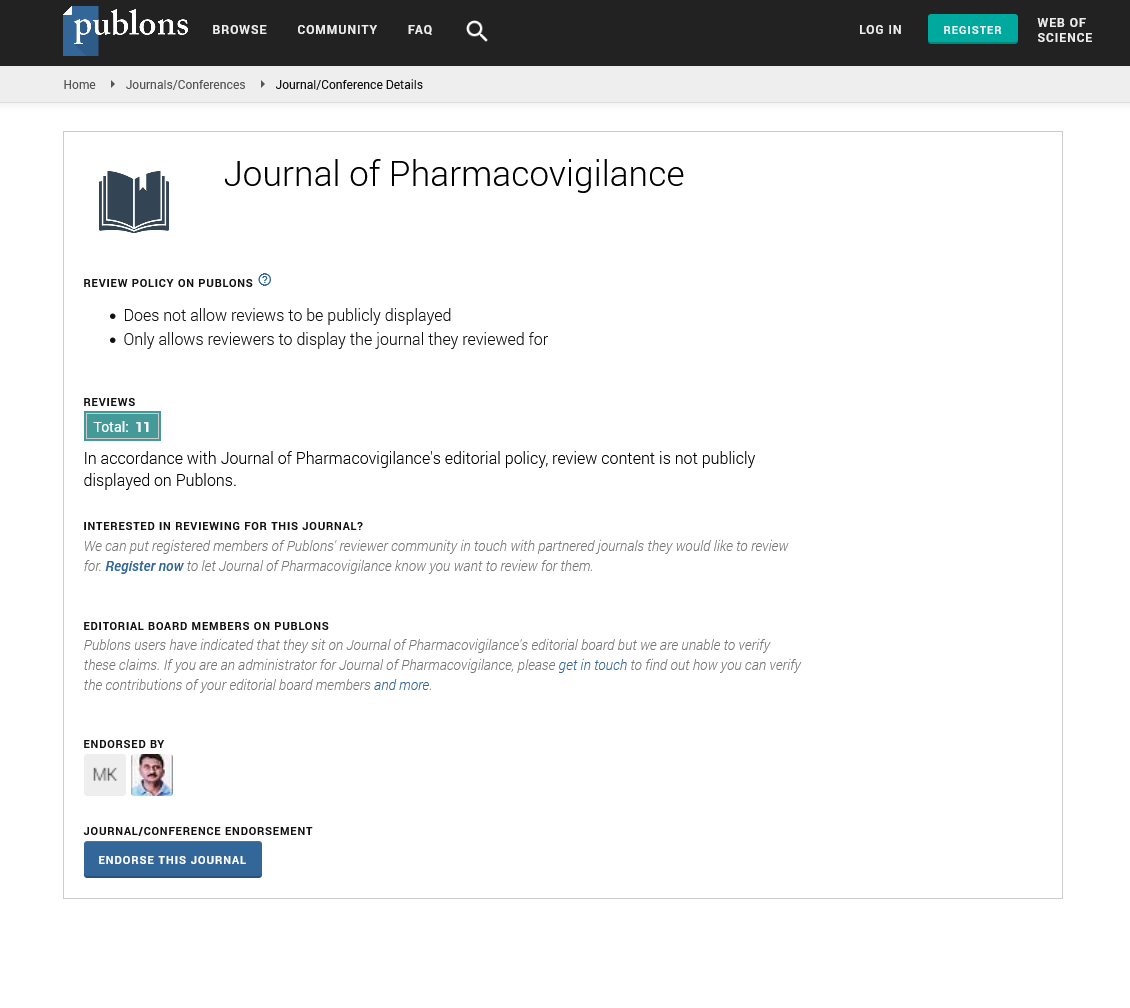Indexed In
- Open J Gate
- JournalTOCs
- The Global Impact Factor (GIF)
- RefSeek
- Hamdard University
- EBSCO A-Z
- OCLC- WorldCat
- Publons
- Euro Pub
- Google Scholar
Useful Links
Share This Page
Journal Flyer

Open Access Journals
- Agri and Aquaculture
- Biochemistry
- Bioinformatics & Systems Biology
- Business & Management
- Chemistry
- Clinical Sciences
- Engineering
- Food & Nutrition
- General Science
- Genetics & Molecular Biology
- Immunology & Microbiology
- Medical Sciences
- Neuroscience & Psychology
- Nursing & Health Care
- Pharmaceutical Sciences
Perspective - (2025) Volume 13, Issue 1
AI-Powered Signal Detection in Pharmacovigilance Databases
Elina Kessler*Received: 03-Mar-2025 Editor assigned: 05-Mar-2025 Reviewed: 19-Mar-2025 Revised: 26-Mar-2025 Published: 02-Apr-2025, DOI: 10.35248/2329-6887.25.13.507
Description
Pharmacovigilance plays a vital role in ensuring the safety of medicinal products by monitoring, assessing, and preventing adverse drug reactions throughout a product’s lifecycle. One of the most challenging aspects of pharmacovigilance is the timely detection of safety signals from vast and complex databases that record adverse drug events. Traditional methods rely heavily on manual review, statistical disproportionality analysis, and expert judgment, which are often time-consuming, resource-intensive, and prone to human bias. In recent years, the integration of Artificial Intelligence (AI) into pharmacovigilance systems has revolutionized the way safety signals are identified, enabling more efficient, scalable, and accurate signal detection.
AI-powered signal detection systems use machine learning algorithms to analyze massive pharmacovigilance databases such as the FDA Adverse Event Reporting System (FAERS), EudraVigilance, and VigiBase. These systems can process millions of individual case safety reports, searching for patterns and correlations that indicate unexpected adverse drug reactions or potential risks. Unlike traditional disproportionality methods such as the proportional reporting ratio (PRR) or the Bayesian confidence propagation neural network (BCPNN), AI techniques can model complex, nonlinear relationships among multiple variables and detect subtle signals that might otherwise go unnoticed.
One of the most impactful contributions of AI in this domain is its ability to incorporate unstructured data, such as narrative case descriptions, into signal detection processes. Natural Language Processing (NLP), a subfield of AI, enables machines to read and interpret free-text data in adverse event reports, extracting relevant clinical concepts, symptoms, drug names, and temporal associations. By transforming unstructured narrative information into structured formats, NLP significantly enhances the sensitivity and specificity of signal detection algorithms.
Supervised machine learning models, trained on labeled datasets of known drug-event associations, can predict the likelihood of new and emerging signals. These models use features derived from clinical, demographic, and pharmacological information to classify reports and prioritize those warranting further investigation. In addition to supervised approaches, unsupervised learning techniques such as clustering and anomaly detection are employed to uncover novel patterns or rare adverse events without predefined labels. This capability is especially valuable in detecting early signals of rare but serious adverse reactions, which are often underreported and dispersed in large datasets.
Several case studies have demonstrated the effectiveness of AI in pharmacovigilance. For instance, AI systems have successfully flagged early safety concerns related to immunotherapies, cardiovascular agents, and antidepressants, often outperforming conventional methods in terms of speed and accuracy. Furthermore, AI models have been used to re-evaluate withdrawn drugs retrospectively, proving their potential in identifying safety issues that traditional surveillance systems failed to detect in real time.
Despite the evident advantages, implementing AI in signal detection presents several challenges. The quality and completeness of data remain critical issues, as adverse event reporting is often voluntary and may lack crucial information. Bias in training data can also lead to skewed results, emphasizing the need for diverse, high-quality datasets. Transparency and interpretability of AI models are further concerns, as regulators and healthcare professionals must understand the rationale behind a detected signal to make informed decisions. To address these issues, hybrid models that combine statistical methods with AI are being developed, offering a balance between interpretability and predictive power.
Regulatory agencies are beginning to acknowledge and support the role of AI in pharmacovigilance. The European Medicines Agency (EMA) and the U.S. Food and Drug Administration (FDA) have both initiated frameworks for the use of AI and real-world data in drug safety monitoring. Collaborative efforts between pharmaceutical companies, academic institutions, and regulatory bodies are fostering the development of standardized AI tools and validation protocols to ensure consistency and reliability across applications.
The future of AI in pharmacovigilance is promising. With continuous advancements in computational power, algorithm design, and data integration, AI is expected to become an indispensable component of post-marketing surveillance. As the volume and complexity of pharmacovigilance data continue to grow, AI-driven systems will enable faster signal detection, reduced manual workload, and earlier intervention, ultimately enhancing patient safety and public health outcomes. By bridging the gap between big data and clinical insight, AI is not only transforming pharmacovigilance practices but also setting the stage for a more proactive and predictive approach to drug safety.
Citation: Kessler E (2025). AI-Powered Signal Detection in Pharmacovigilance Databases. J Pharmacovigil. 13:507.
Copyright: © 2025 Kessler E. This is an open access article distributed under the terms of the Creative Commons Attribution License, which permits unrestricted use, distribution, and reproduction in any medium, provided the original author and source are credited.

